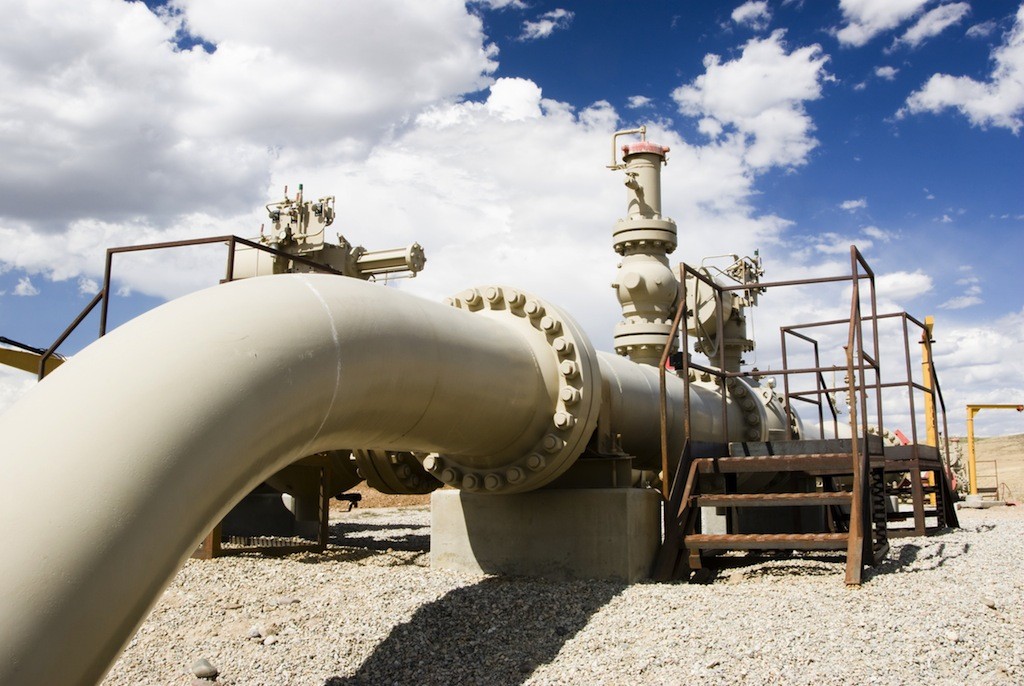Tag Archive for: oil production
Mexico, Cuba, US Talk Again On ‘Doughnut Hole’ In Gulf Waters
/NewsOfficials from Mexico, the United States and Cuba met on Thursday for a second round of talks on the limits of the Western Polygon, an oil-rich area in the waters of the Gulf of Mexico, two people close to the discussion said.
Talks about who owns what is in the so-called “Doughnut Hole” were prompted after Cuba and the United States announced they would restore diplomatic ties in late 2014.
International law gives countries the right to any resources found in the sea within 200 nautical miles of their territory. But when areas overlap, as they do in the case of the resource-rich Doughnut Hole, countries have to craft an agreement.
The talks would conclude on Friday, one of the sources said, noting that the officials aimed to define the coordinates to define where the respective limits lie.
A Mexican government spokesman confirmed officials from the three countries met to try and make progress on the issue and that results of the meeting would be made public on Friday.
Copyright: Rig Zone
At $500 Million A Pop, It’s An Oil Gamble That Has No Precedent
/NewsIn a far corner of the Caribbean Sea, one of those idyllic spots touched most days by little more than a fisherman chasing blue marlin, billions of dollars worth of the world’s finest oil equipment bobs quietly in the water.
They are high-tech, deepwater drillships — big, hulking things with giant rigs that tower high above the deck. They’re packed tight in a cluster, nine of them in all. The engines are off. The 20-ton anchors are down. The crews are gone. For months now, they’ve been parked here, 12 miles off the coast of Trinidad & Tobago, waiting for the global oil market to recover.
The ships are owned by a company called Transocean Ltd., the biggest offshore-rig operator in the world. And while the decision to idle a chunk of its fleet would seem logical enough given the collapse in oil drilling activity, Transocean is in truth taking an enormous, and unprecedented, risk. No one, it turns out, had ever shut off these ships before. In the two decades since the newest models hit the market, there never had really been a need to. And no one can tell you, with any certainty or precision, what will happen when they flip the switch back on.
It’s a gamble that Transocean, and a couple smaller rig operators, felt compelled to take after having shelled out millions of dollars to keep the motors running on ships not in use. That technique is called warm-stacking. Parked in a safe harbor and manned by a skeleton crew, it typically costs about $40,000 a day. Cold-stacking — when the engines are cut — costs as little as $15,000 a day. Huge savings, yes, but the angst runs high.
“These drillships were not designed to sit idle,” said Willard Duffey Jr., an electrician who spent two decades with Transocean. The Deepwater Pathfinder, a ship he had served on for four years, was among the first to be parked off the Trinidad coast. The ship made the voyage there from the Gulf of Mexico about a year ago. Duffey was one of the last men aboard before the engines were turned off. He fretted constantly — “did I do everything I could?” — as he flew back home to Ore City, Texas. “To get the Pathfinder back up would be very difficult to guess actually,” he said.
These rigs, once famously labeled the “new Ferraris” of the oil world, are no ordinary ships. Carrying a price tag of about $500 million a piece, they are loaded bow to stern with sophisticated, and very heavy, gadgetry.
Below the water line sit a half-dozen Rolls-Royce thrusters, coordinated by satellite to push against each other and keep the rig hovering on top of wells lying as much as two miles underwater. Up on deck, there’s a robot that can be launched to work a screwdriver or a wrench under water pressures on the seabed that no human could survive. And the 220-foot tall, dual-activity oil-drilling derrick is capable of simultaneously lifting and lowering gear down to the seafloor, including a diamond-studded drill bit, a five-story-tall blowout preventer and a heavy-drill pipe. The derrick can handle as much as 5 million pounds of gear — equal to the weight of some 20 adult blue whales — going up and down at one time.
All of these fancy elements, though, are what make turning the ships back on so daunting. Chip Keener, whose rig-storage consulting firm advises Transocean, compares it to what would happen if you left a high-tech new car parked in the garage for months. The battery would be dead, sure, but then there’d also be a slew of pre-sets to reprogram. On a drillship, there are thousands and thousands of pre-sets. And unlike your car, those on a ship are essential to its proper functioning. “It’s a big deal,” says Keener.
For now, cold-stacking has been a huge success for Transocean, a long-time Texas powerhouse that’s based today in Switzerland. (It owned the offshore rig that BP Plc was operating in the 2010 Gulf of Mexico disaster.) The company reported a profit of $77 million in the second quarter, surprising investors who had been bracing for a loss. Its stock price jumped 8.5 percent in minutes the next morning in New York.
“I don’t think a simple congrats on this quarter’s cost beat is really sufficient,” one stunned analyst, Scott Gruber at Citigroup, told Transocean executives on a conference call. “A big kudos to all of you.”
Still, there are any number of deepwater rig operators unwilling to turn the engines off: Noble Corp., Rowan Cos. and Pacific Drilling, to name a few. They’re paying anywhere from $30,000 to $50,000 a day to store their out-of-work ships. Chris Beckett, the CEO of Pacific Drilling, said the unknowns of cold-stacking are just too great and the cost to keep the ships running too manageable — about $10 million a year — to turn them off. He likes the peace of mind that comes with this approach. “We don’t worry about how you start them again,” Beckett said in an interview in the company’s Houston headquarters.
The cold-stack versus warm-stack dilemma doesn’t figure to go away anytime soon.
Nearly half of the world’s available floating rigs are out of work today, and most observers expect that number will climb further. Not only are the drillship operators’ customers — the likes of ConocoPhillips and Total SA — slashing spending in high-cost offshore areas and canceling work contracts early, but new rigs that were ordered in recent years keep rolling out of shipyards. Bloomberg Intelligence estimates as much as $56 billion worth of offshore rigs, capable of drilling in everything from shallow water to oceans more than two miles deep, are still under construction.
It’s a far different mood than a couple years ago, when crude was hovering around $100 a barrel and just about every single deepwater rig on the planet was in use. Transocean’s Pathfinder was in many ways the symbol of those go-go days. In mid-2014, just as oil prices were peaking, Eni SpA agreed to pay Transocean $681,000 a day to lease the ship. It was one of the richest drilling contracts ever, an amount that’s about triple the rate a deal signed today would fetch. By the end of that year, with oil in freefall, Eni canceled the contract four months before it was due to expire.
Things are quiet on the Pathfinder these days. The water is calm off Trinidad, one of the top global destinations for drillship storage. A handful of seamen recruited locally make the rounds, in part to ward off criminal elements. They’re joined every once in a while by Transocean mechanics sent in to monitor the ships. The company’s chief operating officer, John Stobart, recently dropped in to check them out himself. CEO Jeremy Thigpen said Stobart came away encouraged.
“He was really impressed with the preservation of all the critical components,” Thigpen said at an energy conference in New York this month. “His belief is, ‘Listen, we’re going to be able to reactivate these rigs in a timely and low cost manner.’”
Stobart’s going to have to wait for his chance. Oil, after having briefly rebounded above $50 in June, is slumping again. And Transocean seems prepared to be in Trinidad for a while. According to island officials, the contract that the company’s negotiating to lease out seabed space could extend through October of 2020.
Copyright: Rig Zone
Mexico 2017 Budget Cuts To Squeeze Pemex, Primary Surplus Eyed
/NewsMexico’s government on Thursday set out plans for a bigger-than-anticipated cut in public spending in 2017, with struggling state oil company Pemex earmarked for a 100 billion peso ($5.36 billion) reduction in funding.
New Finance Minister Jose Antonio Meade said the budget foresaw planned spending cuts of 239.7 billion pesos ($12.83 billion), targeting a primary surplus of 0.4 percent of gross domestic product (GDP) in 2017. It would be the first such surplus since 2008.
Of the cuts, 100 billion pesos fall on Pemex, which is already facing a funding squeeze and has racked up multi-billion dollar losses for years. Since the government ended its oil and gas monopoly nearly three years ago, Pemex has faced stiff competition from the private sector.
“Pemex is making the biggest contribution to the cuts,” Meade said, presenting the budget proposal to Congress a day after he was sworn in as finance minister following the resignation of Luis Videgaray.
In late 2013, the government threw open the industry to private capital to reverse a protracted slide in oil production, but falling crude prices have undermined those efforts.
Currently running at some 2.16 million barrels per day (bpd), Mexican oil production will slip to an average of 1.928 million bpd in 2017, the budget forecasts. The last time Mexican crude output fell below 2 million bpd was in 1980.
Still, the budget does foresee changes aimed at easing Pemex’s heavy tax load.
Less than two years remain before the next presidential election, and President Enrique Pena Nieto’s government is struggling to ramp up economic growth, having fallen well short of its original ambition to achieve annual rates of 5-6 percent.
Hurt by uneven U.S. demand for its goods, Mexico’s economy shrank in the second quarter for the first time in three years.
Next year, the budget foresees growth of between 2 and 3 percent, compared with 2.0-2.6 percent in 2016.
Despite the 2017 cuts – well above the 175.1 billion the government eyed in April – non-discretionary spending was expected to rise by 144.3 billion pesos, inflated by higher financing costs and a slide in the peso’s value.
Next year the government foresees an overall deficit of 2.9 percent of GDP, 0.6 percentage points less than the 2016 target.
The budget foresaw the peso averaging 18.2 per dollar in 2017, and an average price of $42 per barrel for Mexican crude, in line with the government’s hedging program. ($1 = 18.6600 Mexican pesos)
Copyright: Rig Zone
Mexico’s Pemex must take Minimum 45 pct Stake in Deep Water Venture
/NewsMexico’s oil regulator on Wednesday said state-owned oil company Pemex must take a minimum 45 percent stake in its first-ever proposed joint venture with would-be private partners to develop oil reserves in the Gulf of Mexico’s deep waters.
Global oil majors are widely expected to bid in the December auction to help develop the Trion light oil field in the Perdido Fold Belt just south of Mexico’s maritime border with the United States.
Companies such as Royal Dutch Shell and Exxon Mobil operate lucrative developments in nearby U.S. waters while Mexico has yet to achieve commercial production on its side of oil-rich Perdido due to a lack of technical expertise to tap such fields.
The call for bids to partner with cash-strapped Pemex on Trion follows the constitutional energy reform enacted in 2013 which promised to reverse a decade-long slump in crude production by luring new players to explore for and produce oil.
The regulator said the Trion joint venture will be bid out in the form of a license contract, which is similar to a concession, and will include two operators, one of which must have between a 30 to 45 percent stake in the project.
Interested bidders have until Sept. 15 to pre-qualify for the auction by meeting both financial and technical minimum requirements, while the final version of the contract and bid terms will be published on Sept. 30.
The license contract to partner with Pemex on the project will be awarded on Dec. 5. Mexico will also auction 10 separate deep water fields, including four that surround Trion, in December.
Under the terms of the energy reform, Pemex can partner with companies in exploration and production projects, but rather than being allowed to pick its partners, they will instead be selected by an auction run by the oil regulator, known as the National Hydrocarbons Commission.
The partnership will allow Pemex to share the investment needed to successfully develop the field, the company’s first major deep water oil project.
The Trion field holds some 480 million barrels and will require about $11 billion worth of investment.
The field covers about 483 square miles (1,250 square km) and is located under more than 8,202 feet (2,500 meters) of water.
Copyright: Rig Zone
Oil Bulls Face Specter of Market Turmoil on Brexit Aftershocks
/NewsOil bulls could end up road kill following the Brexit ballot.
Crude tumbled as much as 6.8 percent June 24 after U.K. voters decided to leave the European Union. While some analysts said supply and demand still favor rising prices, Britain’s exit means there’ll be a period of uncertainty over Europe’s future, casting a shadow over the market.
“A vote for Brexit is a vote against globalization, against the free mobility of people and goods,” said Francisco Blanch, head of commodities research at Bank of America Merrill Lynch in New York. “Any reversal in the growth of trade and mobility is bad for the commodities, except gold.”
Global equities plunged after the decision, while haven assets such as the dollar and gold surged. UBS AG said traders will soon focus again on the fundamentals of the market as a global crude surplus fades. They’ll also have to weigh any lasting impact from the U.K.’s decision on the world economy and oil demand.
Money managers were bullish in the run-up to the British vote, boosting bets on rising crude prices in the week ended June 21, according to data from the Commodity Futures Trading Commission. West Texas Intermediate rose 0.7 percent to $48.85 a barrel on the New York Mercantile Exchange in the report week. Futures tumbled 4.9 percent on June 24 and were down 2.4 percent to $46.51 at 11:09 a.m.
“We were calling for $44 oil in 2016 on average, now we expect it in the low $40s, roughly $41,” said Michael D. Cohen, an analyst at Barclays Plc in New York. “The 2017 forecast has been reduced by $3, from $60 to $57.”
The surprise Brexit outcome moved the greenback, with the Bloomberg Dollar Spot Index climbing 1.8 percent on June 24, the biggest gain since October 2011. A rising U.S. currency curbs investor appetite for dollar-denominated commodities. Bookmakers’ odds suggested the chance of a vote to leave the EU was less than one in four.
Crude in New York had been on a bull run, climbing more than 80 percent from a 12-year low in February through early June as disruptions from Canada to Nigeria and falling U.S. production eased a surplus. Prices then dropped in three of the last four weeks as Canadian output rose after wildfires that disrupted production were extinguished and the U.S. rig count began to increase.
Re-Balancing Market
“There needs to be a fundamental re-balancing to the market to see sentiment turn bullish and that’s looking unlikely,” said Rob Haworth, a senior investment strategist in Seattle at U.S. Bank Wealth Management, which oversees $133 billion of assets. “The upside for oil was already limited given the rising rig count,” as well as “the fact that a number of OPEC countries plan to boost oil output,” he said.
The Organization of Petroleum Exporting Countries maintained its policy of unrestricted production at its June 2 meeting, and Iran has rejected any cap on output as it restores volumes following the removal of sanctions in January.
Not all analysts are forecasting that the Brexit vote will be bearish for oil. The period of up to two years for negotiations leading to a U.K. exit and the small relative size of the British market may act as a buffer for crude.
“Any impact on the global economy should be limited,” said Michael Wittner, the New York-based head of oil-market research at Societe Generale SA. “The biggest impact will be on the U.K. itself.”
Bullish Bets
Hedge funds’ net-long position in WTI rose by 21,586 futures and options combined to 213,075, the first gain in five weeks, CFTC data showed. Longs, or bets on rising prices, increased by 4 percent, while shorts dropped 10 percent.
In the Brent market, money managers reduced bullish bets by 9,153 contracts in the week, according to data from ICE Futures Europe. Bets that prices will rise outnumbered short positions by 362,765 lots, the London-based exchange said in a report.
In other markets, net bullish wagers on U.S. ultra low sulfur diesel rose 2.9 percent to 16,528 contracts, the highest since July 2014, as futures climbed 1 percent. Net bullish bets on Nymex gasoline surged 88 percent to 7,012 contracts, the biggest percentage gain since November. Gasoline futures increased 4.7 percent.
Precious metals were the only commodities to rise after the vote as investors flocked to havens. Gold surged 4.6 percent, its biggest one-day gain since September, while the Bloomberg Commodities Index of 22 raw materials fell 1.6 percent.
“We all got it wrong,” said Michael Lynch, president of Strategic Energy & Economic Research in Winchester, Massachusetts. “This is strengthening the dollar, which is bad for commodities.”
Copyright: Bloomberg
What Will Drive LNG Growth for the Next Decade?
/NewsQuestion: What will be more localized, more widely dispersed and more transparent a decade from now? Answer: The liquefied natural gas (LNG) industry.
A recent Deloitte report on the changing LNG landscape presents such a scenario, and one of the report’s authors credits the United States’ emergence as a gas exporter as a catalyst for the evolution.
“The beginning of exports of LNG from the U.S. in 2016 adds an interesting new component to the global market, expanding the range of options available to buyers both geographically and in terms of pricing basis,” said Andrew Slaughter, executive director of the Deloitte Center for Energy Solutions.
Slaughter, who wrote the report with colleague John England, also sees liquid hub-based pricing becoming a more viable option compared to longstanding oil-linked LNG pricing formulas.
“It will be interesting to see whether this type of competition results in changes in strategy from the more traditional LNG suppliers,” Slaughter said.
In a recent interview with DownstreamToday, Slaughter elaborated on the Deloitte report’s findings. Moreover, he explained why – despite the unease felt by many in the LNG sector – he sees reason for industry players to be optimistic. Read on for his insights.
DownstreamToday: How would you summarize the current upheaval in the global energy market, and where does LNG fit in amid this dynamic environment?
Andrew Slaughter: In the short term, the global energy market is still adjusting to a lower oil price environment, in which crude oil prices dropped from above $100 per barrel down to $30-$40 levels since June 2014. While the primary causes of this were an accumulating imbalance of oil supply growth, relative to oil demand growth, the LNG market was not immune to the consequences. Long-term contract prices for LNG, which are linked by formula to crude oil price levels, have declined along with crude oil, negatively impacting the cash flow of existing LNG suppliers, as well as putting into question the expected economic returns for new and proposed LNG supply projects.
Over the longer term, in a world where most nations have committed to carbon mitigation policies at COP21, we expect natural gas to be able to increase its share of energy demand around the world, both because of its intrinsically lower carbon intensity than other fossil fuels and also because of its complementarity with renewable energy in the power sector, providing grid stability and reliability when renewable generation is not available. We expect LNG to play a significant part in meeting this growth in gas demand around the world over the next two or three decades.
DownstreamToday: Deloitte has observed that the LNG trade has quadrupled over the last two decades and is poised to double over the next two decades. What were some key attributes of the previous growth period, and what major characteristics would you expect during the next one? Any particularly prominent similarities/differences?
Slaughter: LNG market growth over the past 20 years has predominantly been characterized by the development of large integrated gas projects in which most LNG has been committed to buyers under long-term contracts. This model has been necessary to secure project financing for multi-billion dollar investment in upstream gas development, liquefaction trains, specialized ships and regasification terminals. Using this model, new LNG supply sources have been developed in resource-rich countries like Qatar, Australia, Trinidad and Nigeria; and large new markets have been opened up, such as India and China.
Over the next 10 to 20 years, we expect growth in the LNG market to be associated with the opening up of many more, often smaller, markets served by more flexible supply options, such as floating storage and regasification units, smaller, more modular liquefaction technologies and the growth of both portfolio supplies and LNG traders to more flexibly match supply with market needs. We also expect new and emerging applications for LNG to grow, creating an additional boost to demand – such as LNG as a marine fuel and as a fuel for heavy trucks and rail.
DownstreamToday: You’ve identified seven key factors that should drive LNG growth in the next 10 years. Which of these factors is supported by the strongest evidence? Which factors are more of a guessing game?
Slaughter: Of the seven key factors identified in the Deloitte report, three represent challenges for LNG development, at least for the next several years. The potential slowdown in global economic growth, and perhaps particularly in China, may lead to a near-term slowing of LNG demand, as will continued improvements in energy efficiency which work to decouple demand growth rates from economic growth rates. Thirdly, the amount of new LNG supply capacity planned or announced is a threat to sanctioning the next wave of LNG projects which will likely be needed post 2020.
On the side of opportunity, the other four factors are more favorable to LNG development. These are the reduction of LNG shipping costs, allowing markets to be served more economically; the development of new markets geographically, such as in South East Asia and Latin America; the emerging penetration of LNG into new applications such as for road and marine transport fuels, as well as the larger-scale expansion of LNG as a source for natural gas as a power generation fuel; and the expansion of market liquidity, with more buyers, more sellers, more diverse contract terms and durations making it easier for market participants to structure the right deals to expand their business.
There is fairly strong evidence supporting all these factors, and it will be fascinating to watch how they play out over the next 10 years or so.
DownstreamToday: You’ve no doubt seen industry headlines proclaiming that the era of mega-LNG projects is drawing to a close and that small- and mid-scale projects are on an upward trajectory. What effects on the broader LNG market do you anticipate with the rise of smaller-scale projects?
Slaughter: Smaller-scale projects are emerging on the liquefaction side of the business with project developers proposing smaller and more modular units than have historically been the norm; and also on the regasification side of the business with the increasing deployment of floating regasification and storage units to serve new market locations. Such developments reduce the upfront capital required to launch an LNG project, potentially opening up new sources of financing. And these developments add more flexibility and optionality to the market, and will contribute to the development of new markets and the growth of portfolio players and traders who can play a role in enhancing the efficiency of the market.
DownstreamToday: What is the most surprising thing you learned while preparing your report?
Slaughter: Despite higher-than-accustomed levels of uncertainty about LNG prices, growth prospects and the viability of new supply investments, market participants maintain a high degree of long-term optimism about the future of LNG as a growing and strategic part of the world’s energy supply and trade. This is founded on the attractiveness of natural gas as a fuel in major and emerging markets, for which its lower carbon intensity than other fossil fuels plays a major role; and on the maturing of LNG market structures globally, to accommodate new contractual options.
Copyright: Rig Zone
Oil prices slip on Chinese demand concerns, weak Saudi exports
/NewsOil prices fell on Monday on concerns about the pace of economic growth in China, the world’s largest energy consumer, and signs that global oversupply is curbing Saudi crude exports.
China’s economy grew at the slowest pace in six years in the third quarter, according to official data released on Monday, making it more and more likely Beijing will cut interest rates to stoke activity.
Brent for December delivery LCOc1 was down 38 cents at $50.08 a barrel at 0807 GMT. U.S. crude for November delivery CLc1 traded down 35 cents at $46.91 a barrel, extending last week’s steepest losses in eight weeks.
“Chinese GDP data and the rise in the Saudi stockpile due to falling crude oil exports are weighing on prices,” said Tamas Varga, oil analyst at London brokerage PVM Oil Associates.
Saudi Arabia, the world’s biggest crude exporter, shipped 278,000 barrels a day less crude oil in August, trade data showed, suggesting demand for Saudi oil is sliding as the global supply glut persists.
Meanwhile Austrian oil producer OMV lowered its oil price forecasts on Monday, seeing 2016 prices at $55 a barrel and rising to $70 a barrel in 2017, $80 a barrel in 2018 and $85 a barrel from 2019 onwards.
As a result the company also said it would take a 1 billion-euro impairment charge on asset values in its upstream business.
Investors were also eyeing progress in the removal of western sanctions on Iran that will allow the oil-rich nation to revamp oil production and resume exports to western consumers.
The United States and the European Union on Sunday took formal legal steps to lift sanctions on Iran once Tehran meets the conditions tied to a landmark nuclear agreement with major world powers.
Copyright: Reuters

Latest News
 Breaking Barriers and Building the Future18 March, 2025
Breaking Barriers and Building the Future18 March, 2025 Fundamental factors to strengthen Pemex12 August, 2019
Fundamental factors to strengthen Pemex12 August, 2019 Offshore Project Development: The Road to First Oil26 July, 2019
Offshore Project Development: The Road to First Oil26 July, 2019







